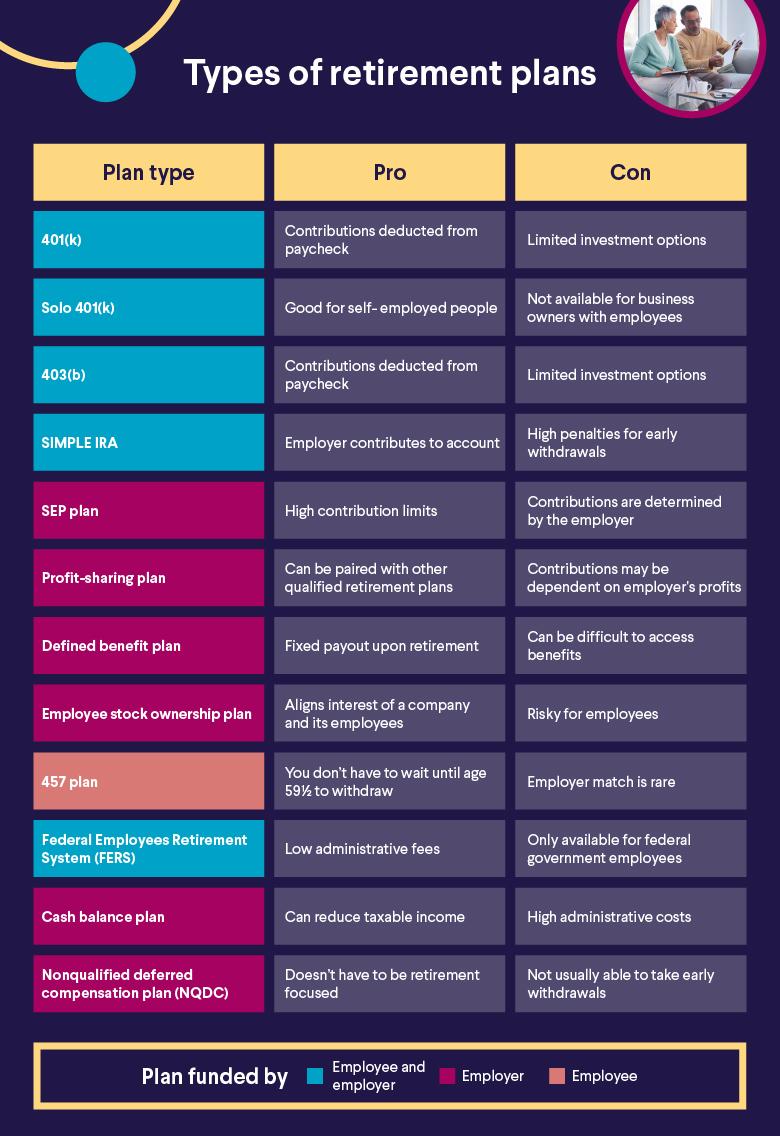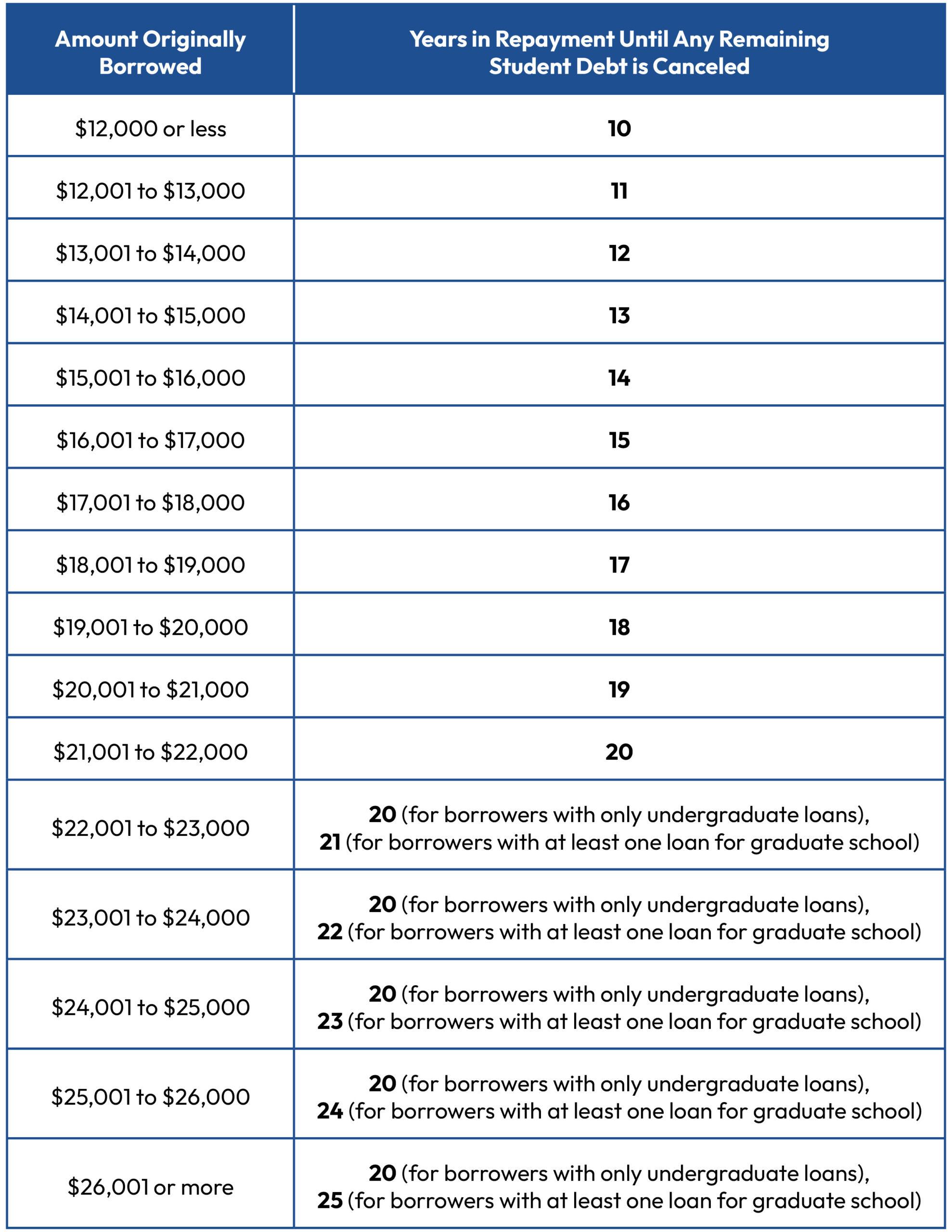Navigating the Financial Seas Together: A Guide to Money Management for Couples
In a world where love often has a tendency to cloud financial judgment, navigating the waters of shared finances can be as turbulent as it is essential. Couples embark on a journey filled with dreams, aspirations, and the promise of a life together, but when it comes to money management, they can quickly find themselves adrift amidst differing spending habits, savings goals, and financial philosophies. Like a well-coordinated dance, effective financial management requires communication, trust, and a touch of compromise. This article aims to illuminate the path to financial harmony by exploring practical strategies, insightful tips, and the important conversations couples need to have. Whether you’re planning for a shared future, buying a home, or simply trying to balance day-to-day expenses, mastering money management as a couple can transform potential pitfalls into opportunities for growth and collaboration. Join us as we delve into the art of financial partnership, ensuring that love and fiscal responsibility move in tandem.
Budgeting Tips
Creating a realistic budget is vital for couples looking to improve their financial harmony. Begin by clearly identifying and discussing your combined income, ensuring both partners understand how much money flows in each month. Next, categorize your expenses, both fixed and variable. This could include essentials like rent/mortgage, utilities, and groceries, alongside discretionary spending, such as dining out and entertainment. Using a spreadsheet or budgeting app can facilitate transparency and foster teamwork. Making sure that both partners contribute to and agree on the budget promotes accountability and reduces the likelihood of financial conflicts.
Once you’ve established your budget, stick to a routine of monthly reviews to track your progress and adjust as needed. Consider setting aside a small percentage of your income for joint savings goals, which can help you work towards future plans, be it a vacation or a home. To keep each other motivated, consider the following strategies:
- Set shared financial goals: Establish short-term and long-term objectives together.
- Communicate regularly: Keep the conversation open about finances to avoid misunderstandings.
- Celebrate small wins: Acknowledge achievements in reaching savings milestones to encourage continued effort.

Debt Management
Managing debt as a couple requires open communication and a collaborative approach. It’s essential to have a clear understanding of each other’s financial responsibilities to avoid misunderstandings and stress. Start by creating a joint list of debts to keep track of what needs to be prioritized. This can include credit cards, student loans, and personal loans. By visually organizing your obligations, you can better strategize the best ways to tackle them. Consider utilizing methods such as the debt snowball or debt avalanche strategies to streamline your repayment process.
Additionally, establishing a monthly budget that accounts for both partners’ incomes and expenditures can make a significant difference. This budget should include a dedicated section for debt repayment and emergency savings. Here’s a simple overview you might find helpful:
| Debt Type | Total Amount | Monthly Payment |
|---|---|---|
| Credit Card | $3,000 | $200 |
| Student Loan | $15,000 | $150 |
| Personal Loan | $5,000 | $100 |
After establishing your debt landscape, set clear financial goals together. Consider prioritizing which debts should be paid off first, based on interest rates and total amounts. Regularly review your progress to celebrate milestones and adjust your strategies as necessary. Remember, managing your finances as a couple will not only strengthen your financial wellness but will also enhance your partnership.

Saving for Retirement
When it comes to planning for the future, setting aside funds for retirement should be a priority for couples. Establishing a joint savings strategy can empower both partners to reach their financial goals while ensuring a secure future. Start by discussing your retirement dreams and goals—whether it’s traveling the world, buying a second home, or simply enjoying life free from financial worry. Create a retirement timeline that outlines when you hope to retire and what kind of lifestyle you envision, helping to define how much you’ll need to save.
To effectively save, couples can consider various retirement accounts that suit their financial situations, such as:
- 401(k) Plans: Many employers offer these with potential matching contributions.
- IRAs: Both Traditional and Roth IRAs provide tax benefits and flexibility.
- HSAs: Health Savings Accounts can also serve as a retirement vehicle, provided you use funds for qualified medical expenses.
You can use an easy budgeting table to visualize contributions:
| Account Type | Contribution Limits (2023) | Employer Match |
|---|---|---|
| 401(k) | $22,500 (under 50) | Up to 6% of salary |
| Roth IRA | $6,500 (under 50) | Not applicable |
| HSA | $3,850 (individual) | Not applicable |
By actively engaging in these discussions and planning together, couples can build a robust retirement fund, ensuring that both individuals feel secure and supported in their journey toward financial independence.

Emergency Fund Planning
Every couple should establish an emergency fund to safeguard their financial stability against unforeseen circumstances. An effective strategy includes setting aside three to six months’ worth of living expenses, which will act as a buffer during emergencies such as job loss, medical crises, or unexpected repairs. Here are some essential tips for building your fund together:
- Set a Joint Goal: Discuss how much you need in your emergency fund and agree on a timeline for reaching that goal.
- Automate Savings: Utilize automatic transfers to a separate savings account dedicated to your emergency fund.
- Monitor Progress: Regularly review your savings together to stay motivated and make adjustments as needed.
It is also crucial to ensure that your emergency fund is easily accessible but separate from your primary checking accounts to prevent casual spending. You could consider using high-yield savings accounts that offer better interest rates while maintaining liquidity. To keep track of your goals, maintain a simple table to visualize your savings journey:
| Month | Amount Saved | Total Fund |
|---|---|---|
| January | $500 | $500 |
| February | $300 | $800 |
| March | $400 | $1,200 |

Investment Strategies
When couples come together to combine their finances, it’s essential to develop that align with both partners’ goals. First and foremost, discuss your long-term visions for financial security. Having a clear understanding of whether you’re saving for a home, retirement, or travel can shape your investment choices. Consider building a diversified portfolio that might include a mixture of stocks, bonds, and mutual funds, balancing risk and reward. Regularly reviewing and adjusting this portfolio could ensure you’re both comfortable and invested in your mutual future.
Another crucial aspect is to set a joint budget that incorporates both discretionary spending and savings for investments. This will help you remain accountable while also providing a roadmap for your financial journey. You might find it beneficial to utilize spreadsheets or budgeting apps that allow both partners to track expenses and investments seamlessly. Additionally, consider establishing a shared investment account; this could enhance teamwork in your financial decisions. By setting clear milestones and rewards for achieving your investment goals together, you can cultivate a healthy financial relationship.

Stock Market Investing
Investing in the stock market can be an exciting opportunity for couples to grow their wealth together, but it’s essential to approach it with a well-defined plan. Communication is key; both partners should converse openly about their financial goals and risk tolerance. Together, establish a mutual understanding of investment timelines and whether you’re aiming for short-term gains or long-term stability. Here are a few important factors to consider:
- Joint Research: Spend time researching different investment options as a team.
- Diverse Portfolio: Create a balanced portfolio that reflects both partners’ interests and risk appetites.
- Regular Check-Ins: Schedule monthly or quarterly meetings to review investments and adjust strategies as necessary.
Diving into the stock market also demands discipline and emotional resilience. It’s easy for couples to become swayed by market fluctuations or one another’s anxieties. To combat this, develop a crisis management strategy to ensure you can both remain calm during market downturns. A simple strategy could include allocating a specific percentage of your savings to stocks, with the remaining funds in low-risk investments. This declutters decision-making during high-pressure times. Consider the following approach:
| Investment Type | Percentage Allocation |
|---|---|
| Stocks | 60% |
| Bonds | 30% |
| Cash Reserves | 10% |
This concludes that balancing a couple’s investment strategies requires ongoing dialogue and a commitment to shared goals. By developing a cohesive approach, couples can enjoy the benefits of investing in the stock market while navigating personal financial landscapes together.

Real Estate Investment
Investing in real estate can be a powerful way for couples to grow their wealth and secure their financial future. When embarking on this journey together, it’s crucial to establish clear communication regarding financial goals and investment strategies. Consider these key factors to ensure a successful partnership:
- Shared Vision: Discuss what you both aim to achieve with s—whether it’s generating passive income, building equity, or creating a vacation home for family gatherings.
- Budgeting: Set a realistic budget that reflects your combined finances, including potential risks and unexpected costs associated with property ownership.
- Research: Get informed about the local real estate market trends, property values, and potential neighborhoods that align with your investment goals.
As you explore different properties, consider the benefits of managing your portfolio collaboratively. This includes not only making decisions on which properties to invest in but also deciding on property management and maintenance responsibilities. Keeping organized records can streamline the process, so creating a simple table can be beneficial:
| Property Type | Location | Estimated Value | Monthly Rent |
|---|---|---|---|
| Single Family Home | Downtown | $350,000 | $2,200 |
| Condo | Uptown | $250,000 | $1,800 |
| Multi-Family Unit | Suburbs | $400,000 | $3,000 |

Credit Score Improvement
Strengthening your financial foundation together is key to fostering a successful partnership, and one of the crucial elements in this journey is enhancing your credit score. A good credit score can open doors to better loan rates, rental opportunities, and even jobs, which is why couples should tackle this aspect collaboratively. Here are some effective strategies to help you improve your credit score:
- Check Your Credit Reports: Retrieve your credit reports from all three major bureaus and review them for inaccuracies. Dispute any errors, as they can adversely affect your score.
- Make Payments on Time: Ensure that both partners are committed to paying bills and debts on schedule. Setting up reminders or automatic payments can help.
- Reduce Credit Card Balances: Aim to keep your credit utilization ratio below 30% by paying down existing credit card debt.
- Consider Becoming Authorized Users: Adding your partner as an authorized user on a well-managed credit card can boost their credit history.
Tracking your progress together can also solidify your commitment to achieving a better credit score. Create a simple table to monitor your credit improvement journey:
| Month | Credit Score | Strategies Implemented |
|---|---|---|
| January | 650 | Checked credit reports |
| February | 670 | Payment reminder system set |
| March | 690 | Reduced credit card balances |
By focusing on these actionable steps, couples can not only boost their credit scores but also enhance their overall financial partnership, making significant strides toward a brighter financial future together.

Financial Independence
Achieving as a couple requires open communication and a strong collaborative approach. Start by setting mutual goals that inspire both partners to strive for financial success together. Focus on creating a budget that reflects your shared values and priorities, allowing for flexibility and adjustments when needed. Here are some key elements to consider:
- Joint Budgeting: Regularly review and update your budget to adapt to changing needs.
- Emergency Fund: Aim to save at least three to six months’ worth of expenses.
- Investment Strategies: Explore options that align with both of your risk tolerances.
Furthermore, consider establishing individual accounts alongside joint ones to maintain financial autonomy while fostering teamwork. This balance can help minimize conflicts and encourage responsible spending. Tracking progress together can boost motivation and accountability, turning from a dream into a tangible reality. Utilize tools and apps for seamless money management:
| Tool/App | Function |
|---|---|
| Mint | Budget tracking and expense monitoring |
| YNAB (You Need A Budget) | Proactive budgeting principles |
| Personal Capital | Investment tracking and retirement planning |

Passive Income Streams
Creating can be an excellent way for couples to increase their financial security and work toward shared goals without the stress of actively managing investments. Consider the benefits of diversifying income sources beyond traditional employment, allowing for greater flexibility and freedom. Some popular options include:
- Real Estate Investments: Consider purchasing rental properties or investing in real estate crowdfunding platforms.
- Dividend Stocks: Invest in stocks that pay dividends, providing a steady income stream.
- Peer-to-Peer Lending: Participate in lending platforms that allow you to earn interest on loans made to individuals or small businesses.
- Digital Products: Create and sell e-books, online courses, or apps that can generate ongoing income.
To better visualize the potential of these passive income avenues, here’s a simple table showcasing potential earnings based on varying investment amounts and outcomes:
| Income Stream | Initial Investment | Expected Annual Return |
|---|---|---|
| Real Estate | $100,000 | 8% ($8,000) |
| Dividend Stocks | $50,000 | 4% ($2,000) |
| Peer-to-Peer Lending | $20,000 | 6% ($1,200) |
| Digital Products | $1,000 | Variable (Potentially >100% ROI) |
By exploring these options and discussing them openly as partners, couples can not only enhance their financial future but also foster a sense of teamwork and shared vision in their money management journey.

Tax Planning
Effectively managing taxes can significantly enhance a couple’s overall financial strategy. By understanding deductions and credits available to you, couples can maximize their tax efficiency. Common areas to consider include:
- Filing Status: Determine whether filing jointly or separately is more beneficial.
- Retirement Contributions: Explore opportunities to boost retirement savings while reducing taxable income.
- Educational Credits: If applicable, utilize tax credits for higher education expenses.
- Homeowner Benefits: Leverage mortgage interest deductions and property tax benefits.
Additionally, proactive planning can help avoid surprises during tax season. To ensure you remain organized and prepared, consider maintaining a simple tracking system. This can include:
| Document Type | Description | Frequency |
|---|---|---|
| W-2 Forms | Income received from your employer | Annually |
| 1099 Forms | Income from freelance or contract work | Annually |
| Receipts | Documentation for deductible expenses | As needed |
| Investment Statements | Record of capital gains or losses | Quarterly/Annually |

Retirement Accounts (IRA, 401k)
When planning your financial future as a couple, retirement accounts like IRAs and 401(k)s play a pivotal role. These accounts not only provide an avenue for tax-advantaged growth of your savings but also help in ensuring that you both meet your retirement goals together. Consider the benefits of establishing both individual IRAs and a joint 401(k) if one partner is employed. This approach offers flexibility and allows each partner to tailor their contributions based on their specific financial situations.
It’s essential to choose the right retirement account and contribution strategy that aligns with your joint financial goals. Here are some points to ponder:
- Contribution Limits: Be aware of the annual contribution limits for IRAs and 401(k)s to maximize tax benefits.
- Employer Matches: If one of you has access to a 401(k) with an employer match, prioritize contributing enough to capture that free money.
- Investment Choices: Look into the investments offered by your retirement accounts and consider diversifying your portfolio.
| Retirement Account | Contribution Limit (2023) | Tax Advantages |
|---|---|---|
| Traditional IRA | $6,500 | Tax-deductible contributions |
| Roth IRA | $6,500 | Tax-free withdrawals in retirement |
| 401(k) | $22,500 | Tax-deferred growth |

Financial Planning for Families
Managing finances as a couple can feel daunting, but it can also be an opportunity to build a strong foundation for your family’s future. By communicating openly about money matters and setting shared goals, couples can cultivate a uniform approach to spending and saving. Here are some essential strategies for effective financial management:
- Open Communication: Regularly discuss your financial situation, including debts, income, and expenses.
- Joint Budgeting: Create a budget that reflects both partners’ incomes and expenses. Consider using budgeting apps that cater to couples.
- Establish Goals: Set short-term and long-term financial goals together, such as buying a house or saving for children’s education.
In the journey of shared finances, it’s imperative for couples to understand and respect each other’s financial habits and backgrounds. This collaborative approach can lead to effective agreement on how to tackle spending, savings, and investments. Here are some common financial pitfalls to avoid:
- Ignoring Debt: Always be transparent about any existing debts to avoid surprises later.
- Neglecting Savings: Allocate a portion of your income for savings before diving into discretionary spending.
- Lack of Flexibility: Be willing to adapt your plans as circumstances change, such as a new job or additional family members.

Personal Finance Apps
In today’s fast-paced world, managing finances as a couple can be a daunting task, but the right tools can make all the difference. offer a convenient way to track expenses, create budgets, and set financial goals together. By utilizing such apps, couples can enjoy enhanced transparency and open communication about their financial habits. Some popular apps include:
- Mint – For budgeting and expense tracking.
- You Need A Budget (YNAB) – For proactive budgeting techniques.
- Splitwise – For managing shared expenses effortlessly.
- GoodBudget – For envelope budgeting virtually.
When selecting an app, it’s essential to consider features that cater to both partners’ needs, such as joint account tracking and goal-setting functionalities. For instance, creating financial goals together can help in maintaining a unified vision for shared objectives like saving for a vacation or a down payment on a home. Below is a comparison table that highlights some key features of popular finance apps:
| App | Budgeting | Expense Tracking | Goal Setting |
|---|---|---|---|
| Mint | Yes | Yes | Limited |
| YNAB | Yes | Yes | Yes |
| Splitwise | No | Yes | No |
| GoodBudget | Yes | Limited | Yes |

Student Loan Repayment
For many couples, managing student loans can be both a financial burden and a source of stress that requires careful navigation. It’s important to approach this responsibility as a team, focusing on shared goals and joint strategies. Start by openly discussing your respective student loan situations, including total amounts owed, interest rates, and repayment plans. Understanding each other’s debts will foster transparency and create a foundation for collaborative financial planning. Cooperation can lead to smarter decisions, such as choosing repayment plans that best suit both partners’ financial situations, potentially opting for income-driven repayment plans to alleviate monthly burdens.
Moreover, consider setting aside a portion of your joint income specifically for tackling student loans. This can be a great way to visualize progress and stay motivated. A simple table can help track key details:
| Loan Type | Balance | Interest Rate | Monthly Payment |
|---|---|---|---|
| Federal Loan | $25,000 | 4.5% | $250 |
| Private Loan | $10,000 | 6.8% | $200 |
In addition to tracking, set milestone goals for repaying those loans—whether it’s paying off a certain amount by the end of the year or reducing the overall debt by a specific percentage. Cultivating a joint budget that accommodates regular contributions towards the loans while still allowing for personal spending can be an effective way to keep both partners engaged and committed to the plan. Remember, every small payment brings freedom closer, allowing both partners to build a brighter and more financially stable future together.

Debt-Free Journey
Embarking on a journey toward financial freedom is a shared adventure for couples. It requires mutual understanding, commitment, and a strategic approach to tackle debts while building a solid financial foundation together. Here are some key aspects to consider:
- Open Communication: Regular discussions about finances can help you stay on the same page, minimizing misunderstandings and fostering transparency.
- Joint Budgeting: Create a joint budget that incorporates both incomes and shared expenses, allowing you to allocate funds effectively towards debt repayment.
- Set Common Goals: Whether it’s paying off a certain amount of debt or saving for a vacation, having shared goals can motivate both partners and strengthen your bond.
To visualize your progress, consider maintaining a simple table that tracks debts, payments, and remaining balances. This not only helps in accountability but also adds a sense of achievement as you watch the numbers decline:
| Debt Source | Total Amount | Payments Made | Remaining Balance |
|---|---|---|---|
| Credit Card 1 | $2,000 | $500 | $1,500 |
| Student Loan | $5,000 | $1,000 | $4,000 |
| Car Loan | $8,000 | $2,000 | $6,000 |

Credit Card Management
Managing credit cards effectively is essential for couples looking to strengthen their financial relationship. Start by establishing a clear understanding of each partner’s credit card usage. Discuss the reasons for having multiple cards, whether it’s for rewards, travel benefits, or building credit. Creating a joint strategy for using credit cards can lead to better financial decisions. Consider implementing the following guidelines:
- Set a monthly spending limit to avoid overspending and accumulating debt.
- Allocate different cards for specific purposes, like groceries or travel, to better track expenses.
- Schedule regular check-ins to review statements and discuss any unexpected charges.
To enforce accountability, using a shared spreadsheet or app can help track credit utilization and payments. A simple breakdown of your credit card spending can be visualized in a table:
| Card Type | Monthly Limit | Monthly Spending |
|---|---|---|
| Groceries | $500 | $300 |
| Travel Rewards | $1,000 | $850 |
| Emergency Fund | $200 | $50 |
This method not only illuminates your spending habits but also highlights areas for potential savings. The key is to communicate openly and collaborate on financial goals, which can lead to a more harmonious partnership.

Budgeting for Freelancers
Freelancers operate in a unique financial landscape where income can be unpredictable and expenses may vary from month to month. To maintain stability, creating a comprehensive budgeting plan is essential. Start by identifying your variable expenses, which can include:
- Software subscriptions
- Freelance platforms’ fees
- Professional development courses
- Home office supplies
Next, carve out a strategy for savings by setting aside a percentage of each payment for taxes, retirement, and emergency funds. Implementing the 50/30/20 rule can be beneficial here: allocate 50% for needs, 30% for wants, and 20% for savings. Regularly reassess your budget to accommodate fluctuating income and evolving financial goals.
| Expense Type | Monthly Estimate ($) |
|---|---|
| Software Subscriptions | 50 |
| Marketing Costs | 100 |
| Professional Development | 75 |
| Retirement Savings | 200 |

Frugal Living Tips
To achieve a satisfying and financially sound partnership, couples should prioritize open communication regarding their spending habits. A monthly budget meeting can foster transparency and accountability. During these discussions, consider creating a shared list to track both fixed and discretionary expenses. Here are some practical tips that can help you align your financial goals:
- Set Joint Goals: Agree on long-term objectives like saving for a house or vacations.
- Create a Joint Budget: Use budgeting apps to monitor expenses together.
- Split Shared Costs: Equitably divide common expenses such as rent, groceries, and utilities.
- Establish an Emergency Fund: Aim to save at least three to six months’ worth of living expenses.
In addition to thoughtful planning, consider engaging in frugal activities that strengthen your bond while saving money. Look for free or low-cost events in your community, like local concerts or farmers’ markets, which can provide enjoyable experiences without breaking the bank. Another fun idea is to challenge each other to cook at home rather than dining out. A simple table of potential savings can highlight how even small changes can result in significant annual savings:
| Activity | Savings per Month | Annual Savings |
|---|---|---|
| Dining Out | $100 | $1,200 |
| Starbucks Coffee | $80 | $960 |
| Cable Subscription | $50 | $600 |

Side Hustles for Extra Income
Exploring additional income streams can be both exciting and practical for couples looking to enhance their financial stability. Side hustles not only provide extra cash but can also strengthen teamwork and communication. Here are some popular options that couples can consider:
- Freelancing: Utilize your skills in writing, graphic design, or programming by offering services on platforms like Upwork or Fiverr.
- Online Tutoring: If either partner has expertise in a specific subject, consider teaching students online through websites like Tutor.com.
- Pet Sitting or Dog Walking: Enjoy spending time with animals while earning money; platforms like Rover make it easy to connect with pet owners.
- Affiliate Marketing: Leverage your social media presence by promoting products and earning a commission on sales through affiliate programs.
- Crafting and Selling Handmade Goods: If you’re crafty, consider selling your creations on Etsy or at local craft fairs.
As you embark on your side hustle journey, establishing a clear plan can help manage your time and finances effectively. Here’s a quick outline to get started:
| Step | Description |
|---|---|
| Identify Skills | Assess what each partner can contribute based on their strengths and interests. |
| Set Goals | Define financial targets and determine how much time you can dedicate weekly. |
| Create a Budget | Outline expenses related to the side hustle and forecast potential earnings. |
| Market Your Services | Promote your side hustle through social media, word-of-mouth, and community boards. |
| Review and Adjust | Regularly evaluate progress and make necessary adjustments to strategies. |

Financial Literacy Education
In any relationship, understanding and managing finances together can be the cornerstone of stability and happiness. Open communication about money can prevent conflicts and build a solid partnership. To get started, consider these essential steps:
- Set Financial Goals Together – Discuss short-term and long-term goals to maintain alignment.
- Create a Joint Budget – Combine your incomes and outline necessary expenses, savings, and discretionary spending.
- Establish Roles – Decide who will handle what aspects of the financial management to ensure accountability.
- Monitor Progress – Regularly review your budget and financial goals to adapt as necessary.
Utilizing technology can also enhance your money management efforts. There are numerous apps designed specifically for couples that can streamline budgeting, track expenses, and help manage shared accounts seamlessly. Here’s a comparison of a few popular options:
| App | Features | Price |
|---|---|---|
| Mint | Budgeting, Bill tracking, Credit score monitoring | Free |
| YNAB (You Need A Budget) | Goal setting, Reports, Educational resources | $11.99/month |
| GoodBudget | Envelope budgeting, Synchronization across devices | Free / Premium available |

Insurance Planning
When it comes to managing finances as a couple, often takes a backseat. However, it is a crucial aspect of a solid financial strategy that ensures both partners are protected against unexpected events. Couples should take the time to assess their current insurance policies, considering factors such as life, health, auto, and property insurance. A comprehensive review will help you identify any gaps in coverage and determine if you are paying too much for your existing plans. Here are some key points to discuss:
- Life Insurance: Evaluate whether you need individual or joint policies to safeguard each other’s financial future.
- Health Insurance: Explore options for family coverage that may be more cost-effective.
- Auto Insurance: Look into bundling policies for potential savings.
- Homeowner’s or Renter’s Insurance: Ensure adequate coverage for all belongings.
Another vital component of effective is understanding the beneficiaries of your policies. Regularly revisiting this information is essential, especially after major life changes such as marriage, the birth of children, or the acquisition of new assets. In addition, maintain clear communication about the level of coverage each partner believes is necessary, and consider scheduling annual reviews of your insurance plans together. Below is a simple table highlighting different types of insurance and their primary considerations:
| Insurance Type | Main Considerations | Recommended Amount |
|---|---|---|
| Life | Family needs, debts | 5-10x annual income |
| Health | Pre-existing conditions, coverage areas | Comprehensive family plan |
| Auto | Liability, collision, comprehensive | Minimum required by law |
| Home/Renter | Costs for replacement, liability | Full value of possessions |

Long-Term Wealth Building
Building wealth together as a couple requires a blend of discipline, shared goals, and strategic planning. To establish a prosperous future, you should consider implementing the following core principles:
- Joint Financial Goals: Both partners should openly discuss their individual and combined financial aspirations, such as buying a home, saving for retirement, or funding children’s education.
- Budgeting Together: Create a comprehensive budget that accommodates both partners’ incomes, expenses, and savings plans, ensuring each person’s input is valued in the process.
- Emergency Fund: Set up a shared emergency fund to cover unexpected expenses, allowing you both to feel secure and prepared for life’s surprises.
As you work towards financial independence, consider exploring various investment options that suit your risk appetite and timeline. These may include:
| Investment Type | Risk Level | Potential Returns |
|---|---|---|
| Stocks | High | 7-10% |
| Bonds | Medium | 3-5% |
| Real Estate | Medium to High | 8-12% |
| Index Funds | Low to Medium | 6-8% |
By diversifying investments and keeping an eye on your long-term objectives, you can create a robust financial foundation that supports both partners’ aspirations. The journey may be long, but with commitment and collaboration, the rewards can be truly fulfilling.

Saving for College
When it comes to preparing for your child’s future, saving for higher education is a crucial component of financial planning. Couples can enhance their savings strategy by working together to set realistic goals and timelines. Consider creating a dedicated college fund where you both contribute regularly. This fund can be supported through various means, such as:
- Setting up a 529 College Savings Plan – Tax advantages can make a significant difference over time.
- Automating savings – Ensure a set amount is automatically transferred to your college fund each month.
- Budgeting for college expenses – Regularly review your financial plan to accommodate contributions.
It’s essential to keep the lines of communication open regarding expectations and potential contributions. Having a clear understanding allows couples to align their saving strategies and make informed choices together. By creating a structured plan, you can make intelligent decisions about how much to save and what type of expenses will arise. Additionally, regular check-ins can help you adjust your plan as needed. Here’s a simple table outlining common college expenses to consider when creating your savings plan:
| Expense Type | Estimated Cost |
|---|---|
| Tuition and Fees | $10,000 – $50,000 per year |
| Books and Supplies | $1,000 – $1,500 per year |
| Living Expenses | $10,000 – $20,000 per year |
| Transportation | $1,000 – $3,000 per year |

Estate Planning
When it comes to sharing a life together, many couples overlook the importance of planning for their financial future. Effective can ensure that both partners’ wishes are honored and that their assets are managed properly in the event of unforeseen circumstances. Couples should consider establishing a comprehensive estate plan that includes the following key components:
- Wills: Outline how assets will be distributed, ensuring clarity and reducing potential conflicts.
- Trusts: Consider a living trust to manage assets during life and after death, providing privacy and efficiency.
- Powers of Attorney: Designate trusted individuals to make financial and health decisions if necessary.
- Beneficiary Designations: Regularly update beneficiaries on accounts to reflect current intentions.
Additionally, it’s essential for couples to communicate openly about their goals. This can prevent misunderstandings and strengthen the partnership. Utilizing a professional estate planner can be beneficial, as they can provide tailored advice based on each couple’s unique situation. Consider reviewing the following factors in your discussions:
| Factor | Considerations |
|---|---|
| Assets | What do you own? How will things be divided? |
| Children | Who will care for them, and how will finances be managed? |
| Health | What are your wishes regarding medical treatment? |
| Taxes | How can you best minimize your estate taxes? |

Financial Goals Setting
Setting financial goals as a couple can transform your relationship with money, fostering teamwork and accountability. Start by having an open discussion about your individual financial aspirations and how they align. Consider the following steps to create a solid plan:
- Identify your short-term goals (e.g., saving for a vacation, building an emergency fund)
- Establish your long-term goals (e.g., homeownership, retirement savings)
- Prioritize your goals together to determine what matters most to both of you
- Assign realistic timelines for achieving each goal to keep the momentum going
Once your goals are set, break them down into actionable steps. You can use a budget spreadsheet or financial management apps to track your progress. Here’s a simple table to illustrate how you might allocate your monthly budget:
| Category | Percentage of Income |
|---|---|
| Housing | 30% |
| Savings | 20% |
| Utilities | 10% |
| Groceries | 15% |
| Entertainment | 10% |
| Miscellaneous | 5% |
| Debt Repayment | 10% |

Money Management for Couples
Managing finances as a couple can be both an exhilarating journey and a challenging task. Understanding each other’s money habits is crucial for long-term harmony. Here are some essential tips to navigate this terrain:
- Communicate Openly: Discuss your financial goals, spending habits, and concerns without judgment.
- Set Joint Goals: Determine what you want to achieve together financially, whether it’s saving for a house or planning a vacation.
- Create a Budget Together: Develop a budget that reflects both of your income and expenses. Use tools or apps to streamline this process.
- Maintain Transparency: Share bank statements and account details to build trust and ensure accountability.
To help with the budgeting process, consider using a table to clearly illustrate your combined finances. Here’s a simple example:
| Income Source | Monthly Amount |
|---|---|
| Partner A’s Salary | $4,000 |
| Partner B’s Salary | $3,500 |
| Freelance Income | $1,000 |
Once you have a budget, track your spending to ensure you’re sticking to it. Regular check-ins about your finances can prevent misunderstandings and foster a sense of teamwork. Here are more strategies to consider:
- Establish Individual Accounts: Allow for personal spending money alongside joint accounts for shared expenses.
- Review and Adjust: Regularly revisit and adjust your budget and goals as your financial situation evolves.
- Discuss Major Purchases: Agree to consult each other before making significant financial decisions.

Family Budgeting
Building a sustainable budget is essential for couples looking to achieve their financial goals together. Start by identifying your income sources and monthly expenses. A transparent approach fosters openness and trust, enabling both partners to engage fully in the budgeting process. Here are some key components to consider when creating your family budget:
- Joint Income: Combine your earnings for a comprehensive financial overview.
- Fixed Expenses: List mandatory costs like rent, utilities, and insurance.
- Variable Expenses: Account for groceries, entertainment, and personal spending.
- Savings Goals: Plan for emergency funds, vacations, or future investments.
Once you have a clear picture of your finances, monitoring your spending against the established budget is crucial. Regularly review your budget to adjust for any changes in income or expenses, ensuring it remains relevant. Consider utilizing the following table to track your monthly expenses and savings accurately:
| Category | Budgeted Amount | Actual Amount | Difference |
|---|---|---|---|
| Housing | $1200 | $1150 | $50 |
| Groceries | $400 | $450 | -$50 |
| Transportation | $300 | $270 | $30 |
| Entertainment | $200 | $220 | -$20 |

Smart Spending Habits
In the journey of building a harmonious financial future, prioritizing becomes essential. Couples can streamline their finances by aligning their goals with practical strategies. Start by creating a clear budget together that outlines essential expenses versus discretionary spending. This clarity allows both partners to understand where their money goes and adjust their spending habits accordingly. Additionally, consider establishing spending limits for non-essential categories to avoid impulse buys and potential conflicts over money.
Another effective approach is to set aside a portion of your income for savings and shared goals. By consistently putting away funds for future adventures or big purchases, couples can cultivate a sense of teamwork—making savings a fun and rewarding endeavor. Try to use a monthly savings tracker to visualize your progress. Below is a simple example to help you get started:
| Month | Savings Goal | Amount Saved | Remaining |
|---|---|---|---|
| January | $500 | $300 | $200 |
| February | $500 | $450 | $50 |
| March | $500 | $500 | $0 |

Personal Finance for Millennials
Managing finances as a couple is both an opportunity and a challenge. Building a solid financial foundation together strengthens your relationship and ensures you’re on the same page regarding spending and saving. Start by openly discussing your financial goals and concerns. This can include short-term aims like vacations or larger goals such as buying a home. Consider creating joint and individual budgets to keep track of your expenses and savings. Important components to address include:
- Income sources – Identify all income streams – salaries, side hustles, investments.
- Monthly expenses – List fixed and variable expenses to see where your money goes.
- Savings goals – Set achievable savings targets for emergencies, retirement, and major purchases.
- Debt management – Discuss how to tackle existing debts together effectively.
Incorporating technology can also enhance your financial management. Utilize budgeting apps that offer transparency and accessibility for both partners, ensuring that everyone stays informed about your financial position. Additionally, consider setting up a regular meeting—say, once a month—to revisit your finances together. This can foster accountability and strengthen your teamwork. To aid your discussions, here’s a simple table highlighting different savings options that you may explore:
| Type of Savings | Risk Level | Return Potential |
|---|---|---|
| High-Yield Savings Account | Low | Moderate |
| Investing in Stocks | High | High |
| Bonds | Medium | Moderate |
| Retirement Accounts (401k, IRA) | Medium | Potentially High |

Wealth Preservation Strategies
To effectively safeguard your collective wealth, couples should consider diversifying their investment portfolios. This involves spreading investments across various asset classes, such as stocks, bonds, real estate, and even alternative investments like commodities or cryptocurrencies. By doing so, couples can reduce risk exposure and increase the potential for steady growth over time. Here are some key strategies to consider:
- Combine Assets: Pool resources to maximize collective purchasing power.
- Invest in a Mix: Ensure a balanced portfolio that can weather market fluctuations.
- Regular Reviews: Schedule periodic check-ins to reassess investment performance and risk tolerance.
Additionally, establishing a robust emergency fund is crucial in preserving wealth. A well-stocked fund acts as a financial buffer during unexpected life events, such as job loss or medical emergencies. Couples should aim to set aside at least three to six months’ worth of living expenses in liquid assets. Below is a simple guide to help you prioritize your emergency savings:
| Expense Category | Recommended Savings |
|---|---|
| Housing (Rent/Mortgage) | $1,500 |
| Utilities | $300 |
| Groceries | $400 |
| Transportation | $200 |
Key Takeaways
As we draw the curtains on this exploration of money management for couples, it’s clear that financial harmony is more than just a spreadsheet or a monthly budget. It’s about building trust, fostering communication, and aligning your dreams as a team. Like a duet, it requires both partners to play their parts—listening, adapting, and supporting one another along the way.
Remember, every couple has their unique rhythm when it comes to finances. The key is to find yours, to be patient with each other, and to celebrate the small victories together. Whether you’re just starting your financial journey or looking to revamp your approach, take the time to understand each other’s perspectives and aspirations.
Navigating money matters may seem daunting, but with shared goals and open dialogues, it can transform into a powerful tool for unity and growth. After all, financial fitness isn’t just about the numbers; it’s about the life you’re building together. So, take the leap, start the conversation, and let your financial partnership flourish—all while paving the way to a secure and vibrant future.




